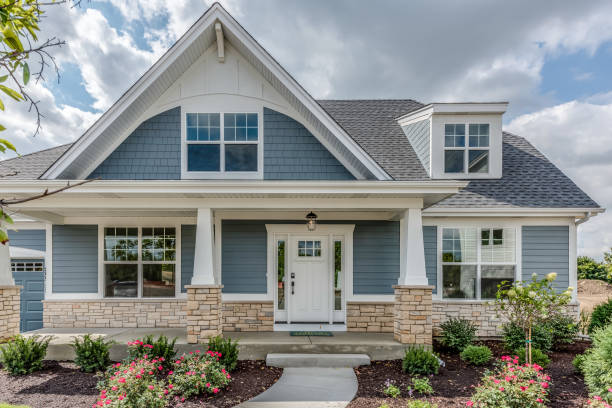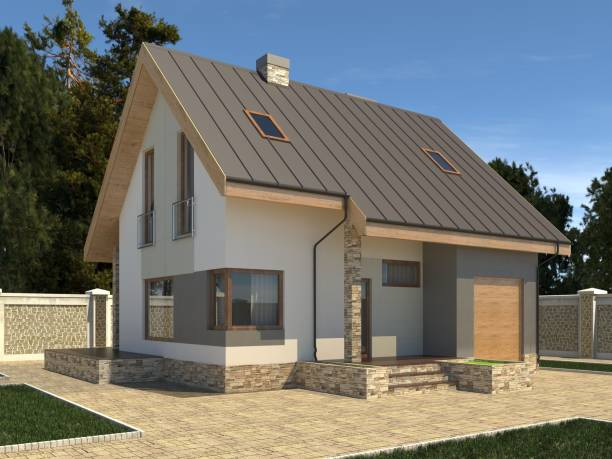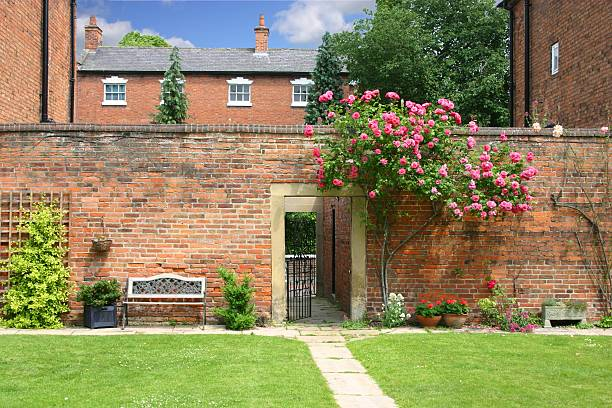Are you curious about the differences between silicone render and K render finishes? Both provide spectacular results when applied to various structures, with unique properties that can give your facade an edge over your competitors. But if you’re unsure which choice is best for your project, this showdown between Silicone Render vs. K Render will help you choose the perfect finalization for your building. We’ll dive into everything from advantages and disadvantages to prices and applications to make sure no stone is left unturned in this comprehensive comparison guide!
Silicone Render Vs. K Render
Choosing between these two popular rendering options involves careful consideration of their unique properties and benefits. While silicone render offers flexibility and breathability, K render provides a robust, weather-resistant finish. Understanding the distinctions in application, aesthetics, and durability is key to making an informed decision for your construction project. Explore the nuances of Silicone Render vs. K Render to ensure your choice aligns seamlessly with your specific requirements and preferences.
What is Silicone Render?
Silicone render, popular in construction and exterior design choices, offers versatility and durability for transforming structures. Despite their similarities, significant differences complicate the decision-making process for your project. This guide explores the features and benefits of silicone render versus K render, addresses common K render issues, and discusses K render color options to assist you in making an informed decision.
Silicone Render: Features and Benefits
Silicone rendering involves the application of a slim plaster coating on a building’s outer surface. Comprising silicone resin, water-based components, and mineral fillers, this mixture results in a sleek surface with a potential lifespan of up to 25 years.
Here are some features and benefits of silicone render:
- Compatibility with different surfaces: Whether you have a brick, stone, or concrete surface, silicone render can adhere to it and make it look attractive and modern.
- Permeability: Silicone render promotes the breathability of walls, facilitating the release of air and moisture. Simultaneously, it acts as a barrier against water penetration, reducing the risk of dampness and inhibiting mold development.
- Simple to use: The application of silicone render is straightforward using a trowel, roller, or spray machine. This efficiency reduces labor costs, ultimately saving both time and money.
- Variety of colors: With a wide range of colors, this render can be customized to meet your client’s design needs.
The Pros of K Rendering
K Rendering is one of the popular choices when deciding on a rendering finish for your building. It offers unique properties that enhance your facade—exploring the pros that can guide you in selecting the ideal finish.
Benefits of K Rendering
Strength and Endurance – K wall render exhibits exceptional durability and resilience against severe weather elements. It can endure rain, wind, and hail, making it applicable to diverse building structures.
Diverse Tone Selection – K Render offers an extensive array of colors, allowing customers to select the ideal shade for their construction. This diversity guarantees you can discover the perfect color to complement your building’s visual appeal and make it distinctive.
Economical Choice – Compared to alternative rendering, K Render is frequently more cost-effective. It proves to be a superb choice for individuals with budget constraints, delivering substantial returns on investment.

An In-depth Comparison of Silicone Render vs K Rendering
Selecting the ideal rendering to finish for your building is challenging due to the many options available. Silicone render and K rendering are the industry’s top choices. They’re the focus of this comparison that explores their pros, cons, prices, applications, and more, aiding your decision-making process.
Benefits of Silicone Render
Silicone render is an excellent choice for a long lasting and highly durable finish. Below are several benefits of Silicone Render:
- Resilient Against Weather: Silicone exhibits excellent water resistance and durability against various weather conditions, making it a preferred option for structures in regions prone to heavy rainfall or extreme temperature fluctuations.
- Low-maintenance: Unlike other rendering finishes that require regular maintenance and repainting, silicone render is resistant to dirt, algae, and mold growth, ensuring the facade remains original.
- Breathability: Silicone render is vapor permeable, allowing the building’s walls to breathe, reducing the risk of dampness and water buildup that can lead to structural damage.
Disadvantages of Silicone Render
While Silicone Render has a lot of advantages, it’s important to be aware of its disadvantages before making a decision. Here are some of the disadvantages of Silicone Render:
- Higher Cost: Silicone render is expensive compared to other rendering finishes, making it unsuitable for those on a tight budget.
- Limited Color Options: Silicone render is available in limited color options, which may only suit some preferences.
Benefits of K Rendering
K Rendering, commonly known as K-Rend, is a popular rendering finish known for its excellent quality and finish. Here are some of the advantages of K Rendering:
- Affordable: K Rendering is cheaper than Silicone Render, making it a popular choice for those on a tight budget.
- Range of Colors: K Rendering is the process available in various colors, allowing clients to choose the best match their taste and preference.
Disadvantages of K Rendering
While K Rendering is popular for its affordability and range of color options, it’s also essential to be aware of its disadvantages. Here are some of the disadvantages of K Rendering:
- Susceptible to Cracking: Over time, K Rendering is susceptible to cracking, which can be costly to repair.
- Limited Breathability: K Rendering is less breathable than Silicone renderings, increasing the risk of moisture buildup, which can cause structural damage to the building.

Common K Renders’ Problems to Be Aware Of
In addition to cracking and peeling, there are several other common K render problems to be aware of. These include:
Discoloration: K render can develop unsightly stains over time due to dirt, pollution, and other factors. It can be difficult to remove without damaging the render.
Efflorescence: This white, powdery substance can appear on the exterior of K render. It is caused by salts and other mineral deposits in the render.
Algae and Moss Growth: K render is prone to developing algae and moss growth in damp conditions, which can be unsightly and damaging to the render.
The Variety of K Rend Colours Available
Regarding exterior finishes for buildings, K Render is one of the popular choices due to its durability and weatherproofing properties. But did you know a wide range of K Render colors is available? It will explore the variety of K Rend colors available and how to choose the perfect shade for your project.
The Variety of K Rend Colours
Now, let’s talk about the variety of K Rend colors available. K Render suggests an extensive selection of hues to complement various architectural constructions. Among the frequently favored color options are:
- Ivory – a warm, creamy shade that complements various architectural styles.
- Silver grey – a cool, modern shade that adds a sleek and contemporary feel to any building.
- Cream is a versatile and timeless shade used on various structures.
- Pebble – a natural, earthy shade that suits structures in rural or coastal areas.
- Somerset – a rustic, warm shade that works well on traditional or historic structures.
These are just a few examples of the many colors available for K Render. The beauty of K Render’s range of colors is that they are durable and long-lasting, ensuring your building looks good for years.
Choosing the Perfect Shade
When selecting the ideal hue of K Render for your project, it’s essential to consider several factors. The initial consideration revolves around the architectural design of the structure. A modern building may look better in a cool shade like silver grey, while a traditional or historic structure may look better in a warm shade like Somerset. Another consideration is the surrounding environment. A building in a rural area may look more natural in earthy shades like pebbles.
Recommendations for Professional Installers of Silicone Render and K Rend Solutions
Are you a professional installer looking for essential information about silicone render and K Rend solutions? It will offer comprehensive suggestions to assist you in selecting the optimal product for your client’s requirements.
Silicone Render vs. K Render: Understanding the Differences
Silicone render and K rend are popular finishes but have different properties that can influence your decision. Silicone is a type of render, a breathable coating that allows moisture to escape, making it ideal for damp areas. It also has excellent UV resistance and is available in various colors. On the other hand, K rend has excellent durability and weather resistance, making it ideal for exposed areas. However, it can be prone to cracking, and limited color choices are available.
Recommendations for Installing Silicone Render
When installing silicone render, consider the following:
Surface Preparation: A clean, dry, and free-from-grease surface is essential before applying silicone render. Any dust, debris, or contaminants must be removed using a pressure washer or other suitable methods.
Priming: A primer is necessary before applying silicone render. It helps to provide good adhesion and prevents potential issues, such as delamination or cracking.
Usage: Adhering to the manufacturer’s instructions while employing silicone render is crucial. Attaining the desired finish requires applying at least two layers, utilizing either trowels or spray equipment.
Drying Time: The drying time of silicone render depends on the atmospheric conditions. However, it should dry for 24-48 hours before applying the final coat or decorative finish.
Recommendations for Installing K Rend
When installing K rend, consider the following:
Surface Preparation: Like silicone render, the surface should be clean, dry, and contaminant-free. A primer may be necessary for specific substrates.
Mixing: K rend must be mixed correctly, following the manufacturer’s guidelines, to ensure optimal performance.
Application: K can be applied using various techniques, including hand application, machine application, and projection. Ensure the product is applied evenly and the thickness is consistent throughout.
Drying Time: K rend requires at least seven days to cure completely, during which time it should be protected from the weather.
Key Takeaways
- Adheres to various surfaces, promotes breathability, and offers easy application, reducing labor costs.
- Exhibits exceptional durability, diverse color selection, and proves to be a cost-effective choice.
- Includes warm, cool, versatile, natural, and rustic shades for customized architectural appeal.
Wrapping Up
In conclusion, silicone render vs. K render has many benefits for different projects depending on individual needs and preferences. These renders offer quality finishes to various structures and unique properties to suit each need. Consider your project and its unique requirements to determine which option will be best for you. If you need help deciding which option to choose, use our extensive comparison guide about silicone render vs. K render! Read up on all the advantages, disadvantages, prices, applications, and colors to make an informed decision that fits your needs perfectly. Ultimately, we hope this comprehensive showdown has provided you with all the information to select the right finish for your building confidently!



